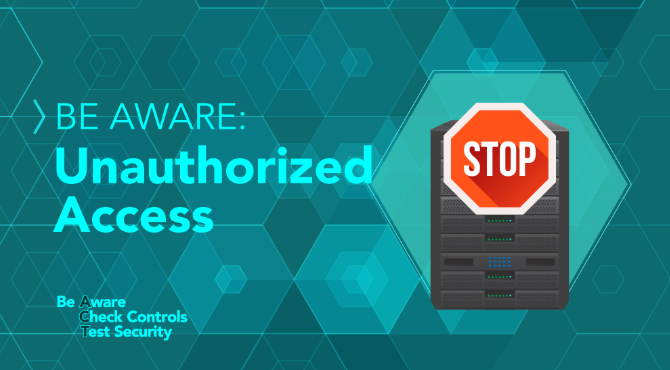There’s a common assumption in many enterprises: once user credentials are provisioned, access is safe. But the truth behind most SAP security failures isn’t a technical bug—it’s human oversight. An employee with more privileges than they need. A temporary contractor who still has access to payroll. A finance role that can post and approve payments without checks. These are the quiet doors that open to fraud, data exposure, and audit failures.
SAP landscape—complex, interconnected, and high-stakes- is especially vulnerable. And as more organizations move operations to cloud-based tools like SAP S/4HANA, SuccessFactors, Ariba, or Concur, those doors have only multiplied. Manual governance models no longer cut it. The risk has outpaced the control.
That’s where intelligent access governance steps in. A system like User Access Shield isn’t about making SAP more secure by default, it’s about making SAP user access smart. Smarter roles, smarter provisioning, smarter reviews, and critical visibility into who is doing what, when, and why.
So let’s break down what truly causes unauthorized SAP access, and what your enterprise needs to do to stop it.

Strengthening SAP Access Control — Why It’s a Boardroom Priority
For many enterprises, SAP access seems like an IT configuration. In reality, it’s a top-tier risk area that affects everything from compliance exposure to financial integrity.
Whether your team is in finance, HR, procurement, or IT, access to SAP defines what your people can see, edit, approve, or control. And when that access is poorly governed, things unravel fast. Misconfigured permissions can allow employees to bypass internal controls, hide transactions, or unintentionally view sensitive information.
Unauthorized SAP access is rarely loud. It sneaks in outdated role assignments, dormant user IDs, or poorly monitored permissions that accumulate over time. And it only comes to light during an audit, or after something goes wrong.
As recent findings highlight, many organizations still depend on fragmented access control models. Roles are defined in one application and cloned across others. Approvals are informal. Access review cycles are irregular. Without a centralized view or automated enforcement, teams lose track of who really has access to what.
Meanwhile, the compliance landscape is tightening. Frameworks like SOX, GDPR, and ISO 27001 now expect real-time visibility, not annual spot checks. Regulators want to see access logs, role change approvals, SoD conflict management, and audit trails that stand up to scrutiny.
That’s why access control is no longer a backend task. It’s a core governance function. It sits next to financial reporting, procurement oversight, and data privacy strategy. And it needs the same level of rigor, automation, and accountability.
The following sections explore the operational cracks in SAP access management and how forward-looking enterprises are closing them with scalable, intelligent governance.
The Hidden Gaps in SAP User Access Management
Access risks in SAP don’t always start with a system flaw. They begin when governance practices fail to scale with business complexity.
The following are the most common structural weaknesses that create exposure in the SAP landscape:
1. Overlapping and Conflicting Roles
- Employees receive multiple roles across departments without cross-functional review.
- Access to both initiating and approving transactions remains unchecked.
- No systemic enforcement of Segregation of Duties (SoD) policies during provisioning.
2. Inactive or Orphaned Accounts
- Contractors or former employees retain access after departure.
- Dormant user IDs are rarely deactivated on schedule.
- Periodic reviews often miss stale or duplicate accounts.
3. Generic or Shared Credentials
- Shared logins are used for operational convenience.
- Role ownership becomes unclear, reducing accountability.
- System activity logs fail to map actions to specific users.
4. Manual Access Reviews
- Review cycles are infrequent and handled using spreadsheets or emails.
- Business approvers lack visibility into actual access behaviors.
- Reviews are completed for compliance checkboxes rather than insight.
5. Decentralized Role Management
- Each SAP module (e.g., Ariba, Concur, SuccessFactors) follows a different access control model.
- No unified view of access across systems.
- Local role design often bypasses global policy.
6. Excessive Access at Onboarding
- Users are given broad roles to avoid delays in access.
- Provisioning focuses on speed over precision.
- No validation against minimum access required for the role.
7. Lack of Real-Time Conflict Detection
- SoD checks happen post-factor or during audits, not before role assignment.
- Business owners are unaware of hidden access conflicts.
- Corrective actions are reactive, often delayed until issues are reported.
8. No Workflow for Deprovisioning
- Access revocation is handled ad hoc when users leave or change roles.
- Termination processes don’t trigger access cleanup across integrated applications.
- Risk grows with each access point left open after user separation.
User Access Provisioning — Where Risk Starts or Ends
Provisioning determines how much risk enters the system on Day 1. The longer it stays manual, unvalidated, or inconsistent, the faster that risk accumulates.
Here are some common provisioning pitfalls:
- Granting access based on peer roles without conflict checks
- Skipping SoD analysis at the time of assignment
- Delayed removal of access after job changes or exits
- Separate processes across modules (e.g., Ariba vs. Concur vs. S/4HANA)
What intelligent provisioning looks like:
| Element | Intelligent Provisioning Behavior |
| Role templates | Aligned to job function, pre-validated for SoD and business fit |
| Approval workflows | Routed through both functional and risk approvers |
| SoD checks | Real-time validation before access is granted |
| Cross-platform coordination | Integrated with SAP BTP for full lifecycle alignment |
User Access Review — Turning Governance Into a Living Practice
Access reviews lose value when they become checklists. To make reviews effective, the process needs context, prioritization, and consequences.
Here is how to fix access review inefficiency:
- Focus on risk-weighted roles first: Prioritize roles with SoD conflicts or access to financial transactions.
- Equip reviewers with context: Include last login, business unit, and current activity level.
- Tie actions to consequences: Auto-revoke access after missed reviews; document decisions with timestamps.
- Audit the reviewers too: Ensure business approvers are not just rubber-stamping approvals.
- Use dashboards to track review cycles: Monitor completion rates, delays, and high-risk role confirmations.
SAP Accessibility — Managing Control Where It Matters Most
Every enterprise has high-impact SAP transactions—functions that can move money, change vendor data, or expose sensitive HR information. These functions demand special access treatment.
Critical transaction controls should include:
- Predefined critical access list: Maintain a catalog of sensitive T-codes and functions across SAP modules.
- Approval gating: Require enhanced justification and multi-layered approvals for critical access.
- Event-bound access: Grant access for tasks like quarter-end closing, then auto-revoke after a period.
- Anomaly alerting: Monitor and flag access use outside normal hours, devices, or geographies.
- Audit dashboard visibility: Let risk officers or compliance teams monitor access patterns in real time.
Diligent User Access Shield — Built for Real SAP Governance
Centralized, proactive access governance requires more than a user access policy. It demands a platform designed for automation, analytics, and enterprise integration.
User Access Shield (UAS) is engineered specifically for the SAP landscape, enabling organizations to simplify, automate, and enforce secure access practices across platforms like S/4HANA, Ariba, Concur, SAC, and SuccessFactors.
- Dynamic Role Provisioning
- Role assignments aligned with Functional User Experience (FUE)
- Persona-based provisioning for business function accuracy
- Automatic access expiration for temporary or event-driven access
- Real-Time SoD Risk Detection
- SoD rule repository integrated across systems
- API-powered conflict checks at the time of access requests
- Continuous risk analysis through user-role matrices
- Access Reviews with Workflow and Audit Trail
- Structured review cycles with full decision tracking
- Dashboard for progress visibility and overdue alerts
- Reviewer guidance with access context and risk score
- Critical Transaction Monitoring
- Identify and track access to sensitive functions
- Alerting for anomalies (time, geography, behavior)
- Control usage trends through real-time dashboards
- Mitigation and Policy Enforcement
- Automated mitigation workflows for flagged risks
- Policy-driven access gates across cloud and on-prem systems
- Supports regulatory alignment (SOX, GDPR, ISO 27001)
Reimagining SAP Access Governance
SAP access shouldn’t be governed by spreadsheets and memory—it should be governed by intelligence, precision, and purpose. Diligent’s User Access Shield stands apart because it does more than automate; it transforms how enterprises think about access as part of strategic control.
With native integration, real-time conflict detection, and risk-driven provisioning, UAS gives organizations the confidence to scale securely and audit without anxiety. As SAP landscapes expand, only intelligent governance can ensure your systems remain trusted, your controls remain effective, and your business stays in command.
The next evolution in SAP access governance is already here—and it’s built around clarity, context, and control.



